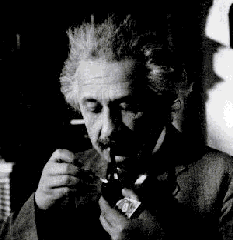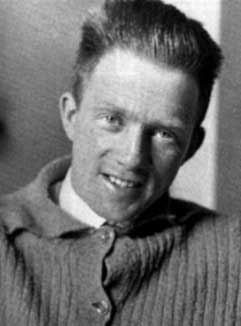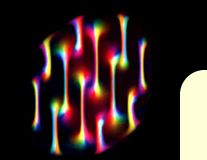Teaching
Lectures: Intermediate Philosophy of Physics
The lectures on this topic are spread over the second and third years of the course. There are 16 lectures in the Hilary Term of the second year on the philosophy of special relativity and 16 lectures in the Michaelmas Term of the third year on the philosophy of quantum mechanics.
 Albert Einstein (1879 - 1955)
Albert Einstein (1879 - 1955)Philosophy of Special Relativity
These lectures start with a review of the foundations of classical particle mechanics, in which the empirical content of each of Newton's laws of motion, and particularly the law if inertia, is examined. The role of the relativity principle, and Newton's Corollary V, is discussed. A fable involving Albert Keinstein's derivation in 1705 of the Galilean transformations from the relativity principle is introduced.
The next part of the course looks at the implications of the null results in ether-wind experiments in the late 19th century, and in particular the significance of the Michelson-Morley experiment. This leads on to the historical and conceptual background to Einstein's 1905 paper, and the role and meaning of his two main postulates. The significance of these postulates can only be understood when an analysis is made of the empirical content of inertial coordinate transformations generally. This leads to the issue of Einstein's treatment of distant simultaneity and its allegedly conventional status. Finally the full 1905 derivation of the Lorentz transformations is compared with the derivation due later to Ignatowsky which appears to do without Einstein's light postulate, as well as with Keinstein's 1705 derivation.
Einstein's route to his 1905 relativity theory was based on adopting the 'principle theory', rather than 'constructive theory' approach to the problem of moving rods and clocks. The extent to which J.S. Bell's defense of a 'Lorentzian pedagogy', or a constructive version of relativistic kinematics, is cogent is discussed in detail. This issue has implications for the problem of understanding the significance of Minkowski's geometrization of special relativity. Is space-time structure, in the absence of matter fields, a real entity in special relativity?
The final lectures look at two further issues. The first is the meaning of mass in relativistic particle dynamics, in which comparisons are made with Newtonian inertial mass. The second involves a brief, informal introduction to the role of special relativity within general relativity, and the consequent re-interpretation of dynamical symmetries such as the relativity principle.
 Werner Heisenberg, 1901-1976
Werner Heisenberg, 1901-1976Philosophy of Quantum Mechanics
This course is designed to introduce the principal rival interpretations of quantum mechanics and to discuss their individual strengths and weaknesses.
The lectures start with discussion of a series of striking experiments and thought experiments involving neutron-interferometry, a standard technique for displaying the subtleties of wave-particle dualism. The main conceptual problems of the theory are illustrated.
The lectures then turn to the formal underpinning of the theory, and the rudiments of the (finite-dimensional) Hilbert space formalism are surveyed. The postulates of quantum mechanics are then rehearsed, with special emphasis on the role of the statistical (or density) operator. This is followed by a brief analysis of the meaning of the so-called uncertainty relations in the theory.
The discussion then turns to the so-called 'measurement problem', and its closely related variant, the 'Schrödinger cat paradox'. The role of decoherence in analysing the measurement process in quantum mechanics is stressed in the language of the statistical operator. The various options for solving the measurement problem are then briefly introduced, with special emphasis at this stage on 'collapse' theories involving violation of the usual time-dependent Schrödinger equation.
'Hidden-variables' theories are another approach to solving the measurement problem, and details of the de Broglie-Bohm, or 'pilot-wave' theory are then studied, in the context of the history of failed attempts to rule out such theories on the grounds of inconsistency. The pilot-wave theory involves instantaneous action-at-a-distance, and by way of an analysis of the 1935 Einstein-Podolsky-Rosen argument, and the 1964 Bell theorem, it is shown how all hidden variable theories


